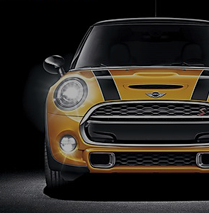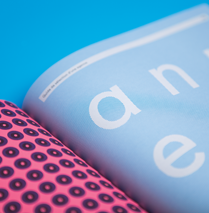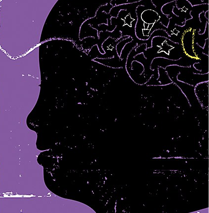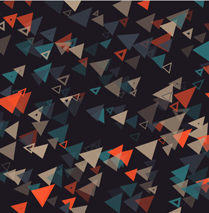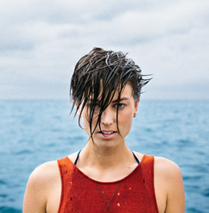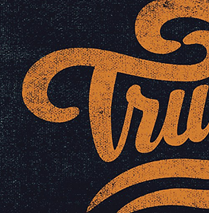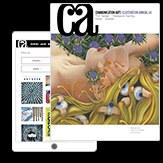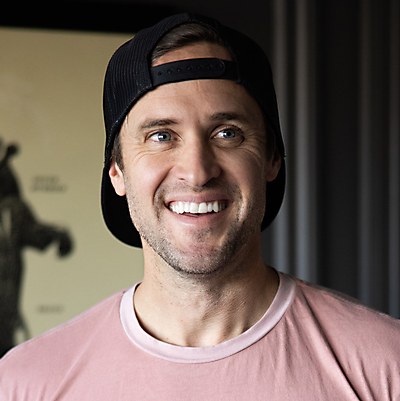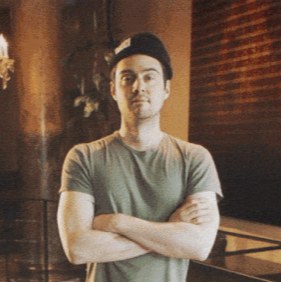How did you get started in 3-D animation and learn the necessary skills to get started in the field? I was always into animation as a kid. I’d stay up late and sneakily watch shows like Channel 4’s Four-Mations and BBC 2’s Animation Now in the late ’80s and early ’90s. I loved how weird and experimental the programming was; from early Aardman to moments of genius like Paul Berry’s short film “The Sandman,” these shows struck a chord and pointed me toward the medium of animation. I vividly remember seeing Pixar’s experimental shorts “Tin Toy” and “Knick Knack” when they first came out, and my love for this slightly unruly but always interesting medium was cemented.
I studied graphic design at Stockport College in Stockport, Greater Manchester, which offered some opportunity to get into 3-D—although the more specialist courses were nonexistent in the north of England then. I’d spend all my free time in the Mac suite at university: it had Infini-D, the most primitive 3-D software by today’s standards, but it got me hooked. I stuck with it and learned everything I could about the tools available.
After graduating, I joined the Soup Collective, a group of filmmakers, artists and coders based in Manchester. It was an amazing experience for me as an artist; I did everything from traditional stop-motion animation to 3-D and visual effects. I also got to work with some great visual artists on music videos for musical artists such as Doves, Editors and Elbow, as well as on large-scale, live audiovisual events and installations.
How did you land the position as senior 3-D artist at the Manchester-based creative agency LOVE? I started as a freelancer for what was meant to be a two-week gig, and those two weeks have since turned into six years.
As 3-D artists at LOVE, we work across a range of specializations. You could think of us as generalists, but that falls short of describing the talent and potential on offer. Our broad focus is on experience design and visualization, but this extends to 3-D animation, character creation, CGI illustration and anything else that needs 3-D wizardry.
That’s what I love about being a 3-D artist: the opportunity to create and build stylistically distinctive worlds that all share the purpose of evoking wonder.
What excites you about the capabilities of Unreal Engine 5 (UE5), created by video game company Epic Games, for 3-D animation? UE5 is changing the game. It’s now possible to get near-photorealistic results in real time, meaning that we can iterate and explore ideas much faster with far less expense. This is a huge advantage for creatives and designers as we can now experiment with lighting, composition and materials without waiting hours for rendering.
It also opens new possibilities for interactivity and collaboration. For example, we can create a 3-D model of a space and invite a client to explore it virtually. This gives the client a better sense of the space than viewing a single 3-D render.
What are some examples of UE5 in action that have impressed you? The BBC’s coverage of the Tokyo 2020 Olympics was one of the first times this technology was used in action on a live broadcast. With the restrictions of the pandemic in full effect, sending presenters to Japan wasn’t in the cards; instead, the BBC used UE5’s real-time technology to bring Japan to Manchester, creating an immersive virtual set that fooled many into thinking it was real.
Staying in Manchester, we saw the first instance of Unreal being used for virtual production in the British soap Coronation Street. Shot on Recode XR’s new virtual production stage, this style of real-time staging enabled actors to be placed in virtual scenes. Not only was this a great time-saving process because there was no moving between physical locations, but it also cut down on the environmental impact of production.
Finally, you may have seen that NBA superstar Luka Dončić released his own MetaHuman via TikTok under the guise of Luk.AI. Performance capture and AI will drive his digital counterpart, allowing him to interact with other creators and essentially act as an ambassador for his brand when Dončić’s schedule gets tight.
What impresses me most, though, is Epic Games’s efforts to democratize UE5. By licensing its technology for free until creators make substantial profits, Epic Games effectively puts its once-expensive tools into the hands of big studios and indie creators alike.
Given UE5’s open-world capabilities (“open world” meaning large-scale, highly interactive experiences) and its integration with Lumen, a lighting system that does away with lightmap UVs, how do you see the engine becoming a tool for experiential designers? Earlier versions of Unreal had ray tracing, which gave good lighting results but wasn’t performant with bigger scenes or lower-spec computers. To get around this, you’d need to “bake” all the scenes’ lighting into lightmaps to maintain realism and interactivity. UE5’s Lumen system has removed these hurdles, meaning scenes look great without much tweaking of the lighting.
The engine is also very powerful for creating open-world experiences. It’s now easy to create large terrains with multiple biomes, and the engine handles levels of detail very well. This means that you can create a huge world with various areas to explore, and the engine will still run smoothly on lower-end hardware. So, UE5 will become an essential tool for experiential designers, especially those who seek to create large, open-world experiences.
With the advent of interactive branded experiences being created in game engines like UE5, what are some things that brand creatives and designers can learn from video game design? As designers and creatives look to balance form and function in good design, game designers work to balance game mechanics with visual appeal. A strong aesthetic will only get you so far; you must nail both for successful engagement. Thinking beyond what’s Instagrammable, consider how you can incorporate levels, challenges and rewards—just like a game does—into brand experiences. This will motivate visitors to explore further and, more crucially, revisit the experience.
What have been some of your favorite projects that you’ve worked on at LOVE, and what have you learned from them? I loved seeing our Time Tunnel come to life for Omega’s Winter Olympic Experience in Seoul. I worked on the 3-D design of the outer form that housed the experience within. Months later, it went live on the other side of the world, and seeing the flood of social media posts come in from people enjoying the experience was incredible. What was once an idea and pixels on a screen became an interactive space that people were physically in and curious about.
I think what I’ve learned from these experiences is that the most challenging projects that require the most collaboration often turn out to be the most rewarding. When you’re working on something you know will be seen and experienced by so many people, it pushes you to do your best work.
What is the most important skill you need to succeed in 3-D animation? The ability to create high-quality 3-D models. There’s a wealth of great free and commercial 3-D models out there, making it easy to kit-bash a scene together. This is fine as an exercise in scene building or if you want to specialize more in lighting and material design, but modeling is fundamental to all 3-D. If you work on those skills early on, you’ll give yourself a strong foundation on which to build everything else. ca


